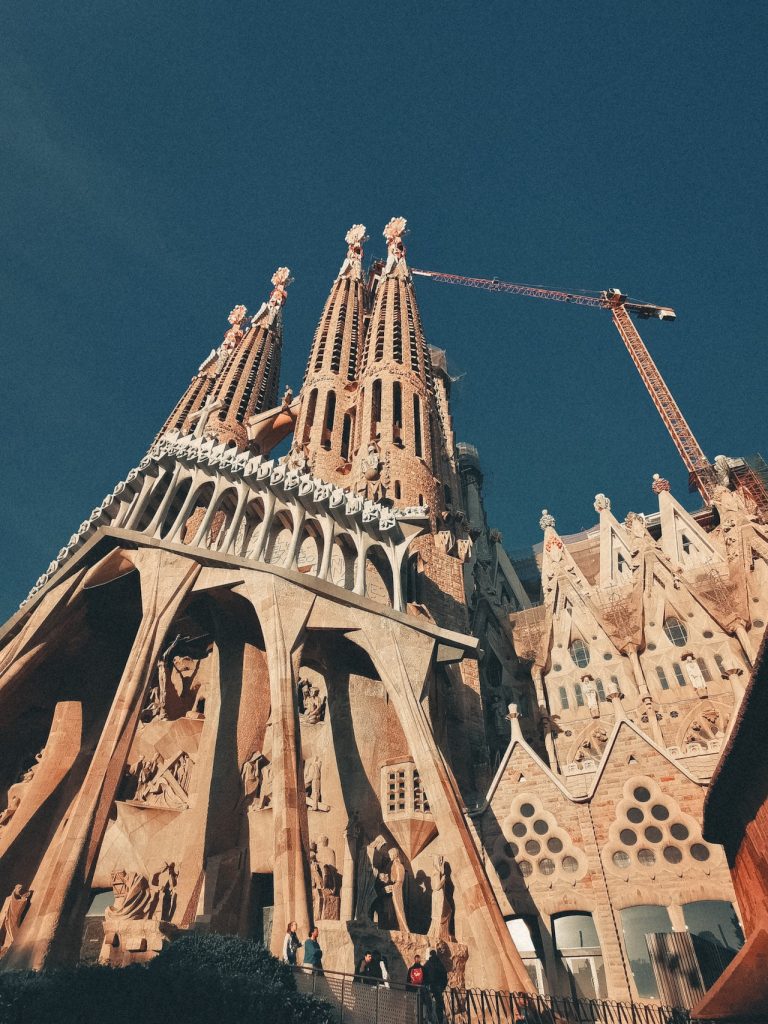Exploring Spanish Architecture and Barcelona
Exploring Spanish Architecture and Barcelona
To walk around the city of Barcelona is to see centuries of different architectural styles and influences all within a single stroll. Among other things, Barcelona is one of the top destinations for architecture enthusiasts around the world and for people that want to learn Spanish.
But what makes the architecture in Barcelona so special? That’s what we’ll cover in this article, touching on things like
- Barcelona’s long architectural heritage
- Major architectural movements in Barcelona
- Some of Barcelona’s must-see buildings
Keep in mind that the topic of architecture is vast and covers decades of history, so we won’t be covering everything and a lot of it will have to be condensed.

A (Very) Abridged History of Architecture in Barcelona
The University Pathway Program is designed for students who want to study within Spain and who already have a bachelor’s degree or one that was attained in an education system somewhere outside of Spain. Moreover, prospective students should already know which study program they want to apply to. With that, Academia GUIU can give you the best chance of success for entering the Spanish university system.
Aside from this, there are also Specific Competency Tests (PCE), which can vary according to a prospective student’s educational background and the study program they’re applying for. Students with a bachelor’s degree done outside of the Spanish education system must take the Specific Competency Tests (PCE) since they are required by Spanish universities no matter what degree you’re applying for.
The Modern Period and Modernisme
Around the turn of the 20th century, an artistic movement was formed in Barcelona known as modernisme or Catalan modernism. This coincided with the Renaixença cultural movement, which is also known as the Catalan Renaissance which was focused on claiming and presenting a distinctly Catalan identity. Barcelona was the base of the movement, so naturally, a lot of its influences can be seen throughout the city. Today one of the movement’s longest-lasting legacies is its architecture.
Cost of living in Barcelona >>
In terms of architecture, modernisme preferred the use of curves over straight lines, dynamic shapes, and intentional asymmetry. Decoration and exteriors were often richly decorated with fine detail and involved organic or natural motifs like plant life.
The most famous architect working in the modernisme movement at the time was Antoni Gaudí. His Sagrada Familia remains a global icon of architecture and probably Barcelona’s most famous building.
Other famous buildings of the style include Casa Batlló by Gaudí as well as Castell dels Tres Dragons (Castle of the Three Dragons) by Lluís Domènch i Montaner which takes influence from both medieval and Arab styles as was common in his work.
Numerous architecture works from the modernisme movement are now listed as World Cultural Heritage sites by UNESCO. Among others, these include Sagrada Família and Casa Batlló as well as Palau de la Música Catalana and Parc Güell.
Barcelona Architecture After Modernisme
The twentieth century saw huge changes to Barcelona’s architectural landscape as well. As time passed different schools of thought and movements cropped up, adapted, and influenced each other.
After modernisme, the movement of novecentismo took hold in the 1920s and 1930s. This period saw architects more willingly embrace Mediterranean and Greco-Roman styles. In fact, the movement was so large that it had several sub-currents such as gaudiniano and neobrunelleschiano (named after Gaudí and Brunelleschi). Today one of the most famous novecentismo buildings in Barcelona is Iglesia de Santa María Reina which itself is an example of novecentismo with neo-renaissance elements in Spain and Barcelona.
Since the 1930s there have been several movements that would take whole other articles to do justice to. Some standouts include racionalismo, which was a style focusing on practicality and Escuela de Barcelona which focused on logical, simple lines, and traditional construction materials.
In the twenty-first century, there’s been a movement to combine architecture in the city with environmental sustainability. From the contemporary age, La Torre Agbar by Jean Nouvel is one of the most iconic buildings made during this time. Its towering oval cylinder was partially inspired by Gaudí’s Sagrada Família.
If You’re Ready to Step into a Bigger Picture of Success, Let’s Talk.
Start your adventure in Spain now!
Tell us your doubts about pathway courses in Spain, and we will contact you to solve all your doubts.